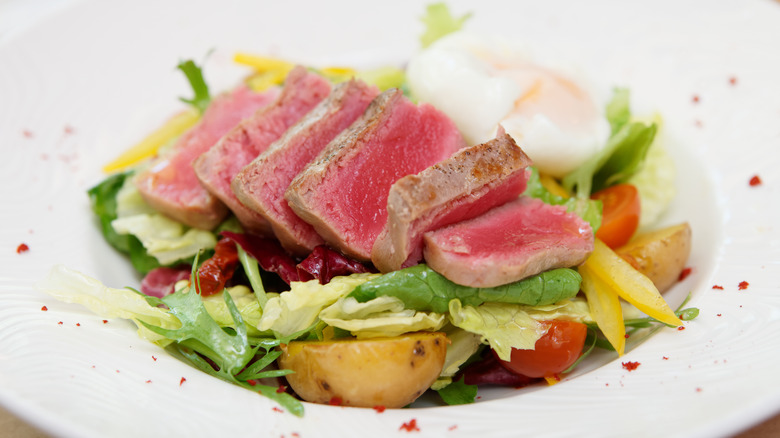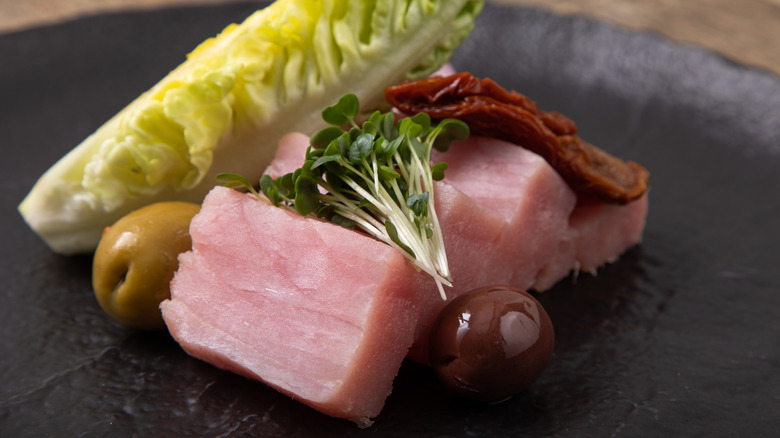What's The Difference Between Oil-Poached And Confit Tuna?
Whether you prefer it in a poke bowl, seared with a sesame crust, or flaked from a can and coated in a mayonnaise dressing for tuna salad, the fish is a highly demanded ingredient found in many dishes. There are several different types, the most popular being skipjack, albacore, yellowfin, bigeye, and bluefin tuna (via Fishing Booker). Skipjack and albacore may ring a bell, as 70% of canned tuna uses skipjack, and 20% uses albacore. Skipjack is darker in color with smaller chunks, often in cans that are labeled "Chunk Light." Albacore tuna has a lighter hue, and cans of it are often labeled "White Tuna." Yellowfin is the more versatile of the tuna types, suitable for canning, steaks, and sushi. Bigeye is a bit of a fattier cut, providing more flavor, while bluefin is leaner and higher quality, often referred to as the king of the tuna family. Now that we've nailed down the common varieties, let's talk preparation methods.
Not only can you sear tuna or macerate it in citrus juices for no-heat cooking, but you can also sous-vide it, bake it, poach it in oil, and confit it. Oil-poaching and confiting are similar in that they both require cooking in fat, it's important to distinguish between the two and recognize the benefits of each.
Oil-poaching is quicker
According to Blue Flame Kitchen, to poach is to cook food in liquid just below boiling point, providing a delicate texture. In this case, the liquid happens to be oil. MasterClass says the key to oil-poaching tuna is to use a cup of olive oil per ounce of tuna steak and to cook it over medium-low heat until it's mostly opaque on the outside and pink in the center. This gentle method provides flavor from the healthy fat while not overcooking the flesh. When overcooked, tuna can turn an unsightly gray color, and its texture becomes tough. For this method, it's best to use yellowfin, bigeye, or bluefin, as these come in steak form.
According to Great British Chefs, to confit is to simmer food in fat. While this definition sounds similar to oil-poaching, MasterClass states that when using this French technique on tuna, soaking the fish in olive oil (a cup of fat per pound of fish) overnight is necessary. Once it's done soaking, transfer the tuna and oil to a saucepan and cook over medium-low heat until the fish is (again) opaque yet remains pink in the center.
The difference between the two methods is that confiting requires more time and less oil than oil-poaching. However, the more exposure the fat has to the fish, the more infused it will become.

